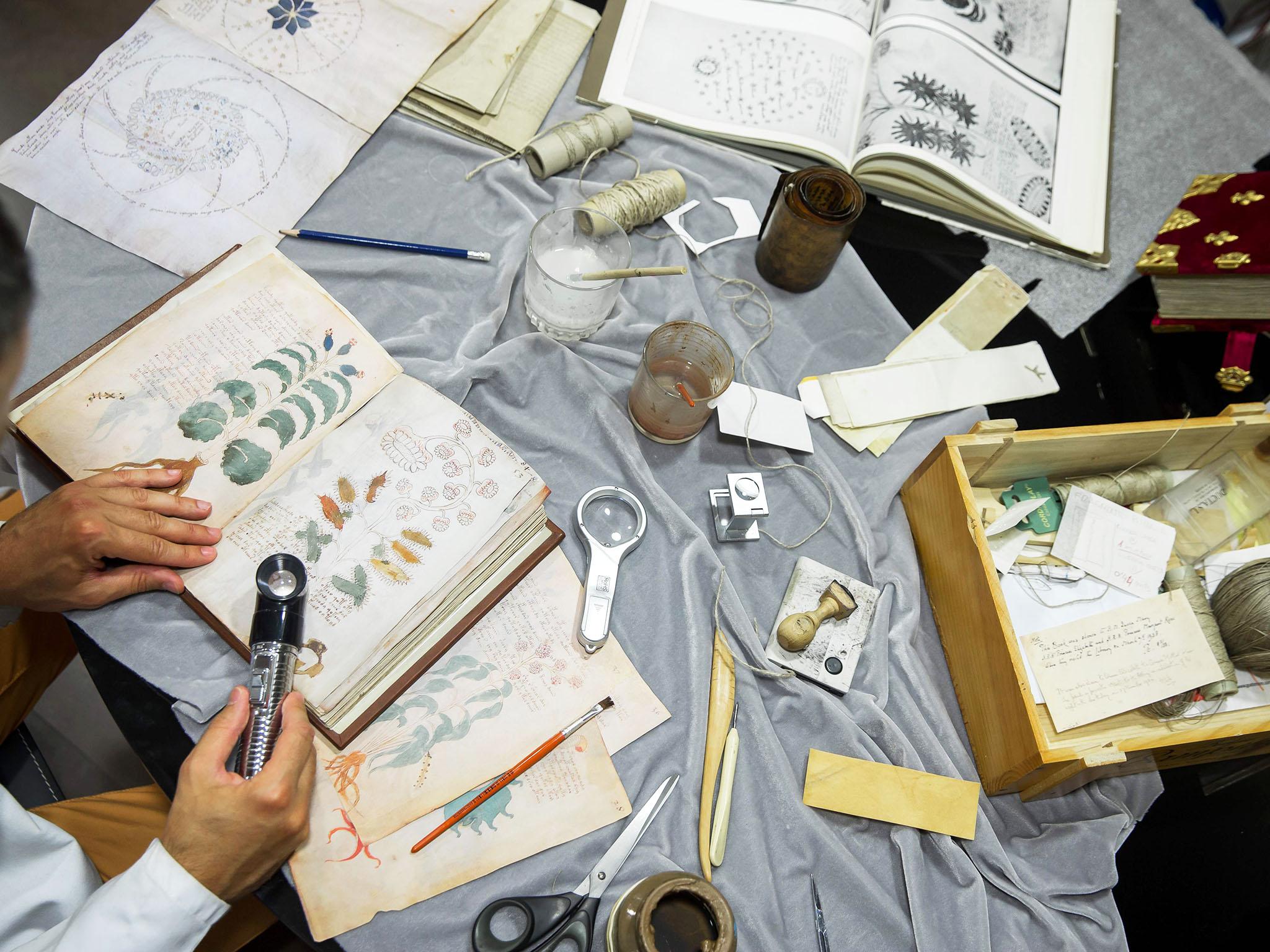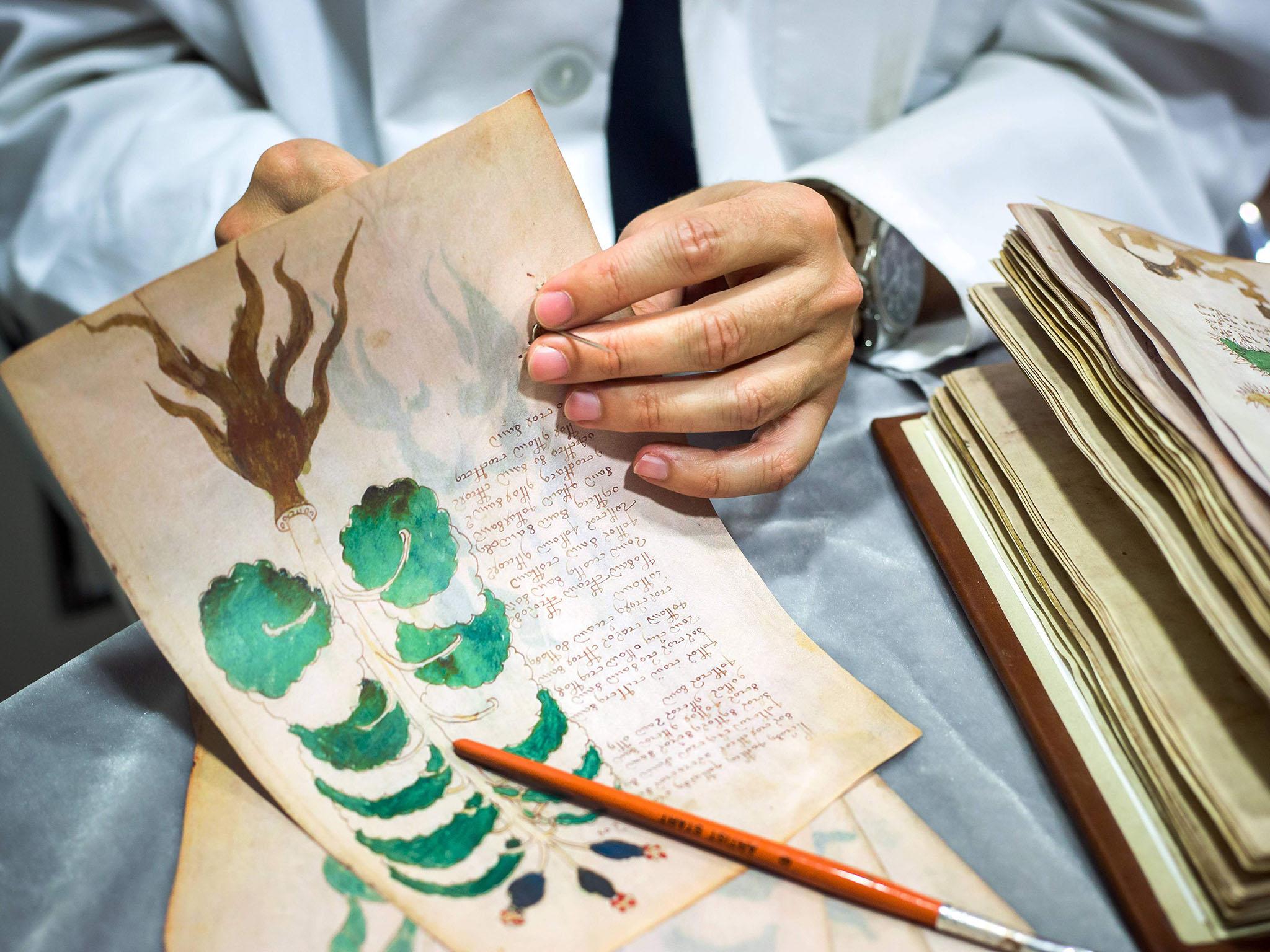Aliens, hoaxers or a lost culture: who wrote the Voynich Manuscript?
The mysterious Voynich manuscript is to be published in replica, and conspiracy theorists are rubbing their hands. Here are the top four theories about this most enigmatic tome

Your support helps us to tell the story
From reproductive rights to climate change to Big Tech, The Independent is on the ground when the story is developing. Whether it's investigating the financials of Elon Musk's pro-Trump PAC or producing our latest documentary, 'The A Word', which shines a light on the American women fighting for reproductive rights, we know how important it is to parse out the facts from the messaging.
At such a critical moment in US history, we need reporters on the ground. Your donation allows us to keep sending journalists to speak to both sides of the story.
The Independent is trusted by Americans across the entire political spectrum. And unlike many other quality news outlets, we choose not to lock Americans out of our reporting and analysis with paywalls. We believe quality journalism should be available to everyone, paid for by those who can afford it.
Your support makes all the difference.It’s one of the rarest, most mysterious books in existence, and now the curators of the fabled Voynich manuscript are allowing copies to be made for the first time in the hope of cracking its secrets.
But if you do fancy your chances at decoding this 400-year-old tome, be warned that up to now no one’s been able to read a single word of it – not even the Second World War cryptographers who smashed the Nazis’ most difficult cyphers.
The manuscript came to light in 1912 and is named after the Polish bookseller Wilfrid Voynich, who bought it among a job lot of books from the Collegio Romano in Italy at a fundraising clear-out. Among its 240 pages are illustrations of plants and stars in the night sky, as well as a closely handwritten text that, if it is in a genuine language, isn’t one of which any other record in the entire world remains.
The book is currently under lock and key at Yale University in the US, but Raymond Clemens, curator of the Beinecke Rare Book and Manuscript Library there, says an agreement has been reached with the small Spanish publishing house Siloe to produce 898 facsimile copies. And Siloe – which likes palindromic numbers – is wasting no hyperbole (or translation costs) in publicising the deal.
According to the website of the specialist facsimile publisher, “the Voynich manuscript is the only medieval remains to be decrypted on the planet. What really holds this codex significance, if any? What language, writing system or cryptographic code is written? What led to his mysterious author to write a treatise intended apparently not be read by anyone?”

What, indeed? Naturally, conspiracy theories abound about the manuscript, from those who claim it’s all a hoax dating back no further than its discovery in 1912, to others who suggest it holds the key to extraterrestrial life. And Siloe ramps up the enigma with its speculation: “It could be the prescription for a contraceptive potion or a secret alchemical formula for obtaining gold – the famous philosopher’s stone, or perhaps an Elvish will. Or it could, as noted by others, hide the secret of immortality. Are we, perhaps, as has also been suggested, before the day of an alien?”
Of course, that they would say that, isn’t it? But in plain English, what are the best guesses at what’s actually in this mysterious document?
It’s just a hoax
The manuscript is written on vellum that has been carbon-dated to the early 15th Century, and it’s said to have once passed through the hands of Rudolf II, Emperor of the Habsburg Empire in Prague and collector of occult artefacts. But the BBC’s Simon Worrall wasn’t convinced when he inspected it for Radio 4 two years ago, and wrote, “I believe the manuscript is a forgery by Wilfrid Voynich himself. One of the most common tropes in the history of forgery is that of a rare book dealer ‘discovering’ previously unknown manuscripts. Voynich is known to have had just this ‘magic’ touch. He is also said to have acquired a large supply of vellum and to have used his knowledge of chemistry gained at the University of Moscow to replicate medieval inks and pigments.”
It’s a message from aliens
Google Voynich + aliens and you’ll find any amount of bonkersness. Here’s one theory randomly lifted from ancient-code.com: “Because it contains a language that cannot be found anywhere else on the planet, and given the fact that the ancient manuscript depicts star charts that are unknown to us, the Voynich manuscript could have been created by a being not from Earth, who during the 1400s crash-landed on Earth and created the manuscript documenting life on Earth. Knowing that humans did not possess the necessary technology to help the alien visitor return to his planet, it is possible that the alien visitor decided to chronicle his remaining life on our planet inside the manuscript.”

It’s a nature encyclopaedia
Stephen Bax, professor of modern languages and linguistics at the Open University, writes on his website – with an apology to conspiracy theorists – that he believes it to “probably to be an attempt at an encyclopaedia or ‘summa’ aiming to encompass contemporary knowledge of plants, astrology/astronomy and related areas. It was probably intended for a specific linguistic community, for which the script was specially devised”.
It’s a 16th century con trick
There are some suggestions that the aforementioned Rudolf II bought the book for 600 gold ducats from Dr John Dee, a mystic and astrologer from the court of Elizabeth I and his companion, Edward Kelley. Kelley was a noted fraudster (he was the one who passed messages to Dr Dee reputedly from angels) and died after falling from a tower where he’d been imprisoned by Rudolf for singularly failing to produce the gold he claimed he could create through alchemy. Was the Voynich simply another Kelley scam? What’s that phrase again about fools and their money?
Speaking of which, you’ll doubtless have your own ideas of what the Voynich really is and, thanks to the deal struck with Siloe, you can very soon get your hands on a facsimile copy to formulate your own hypothesis. And that’ll just be £6,000 please…
Join our commenting forum
Join thought-provoking conversations, follow other Independent readers and see their replies
Comments